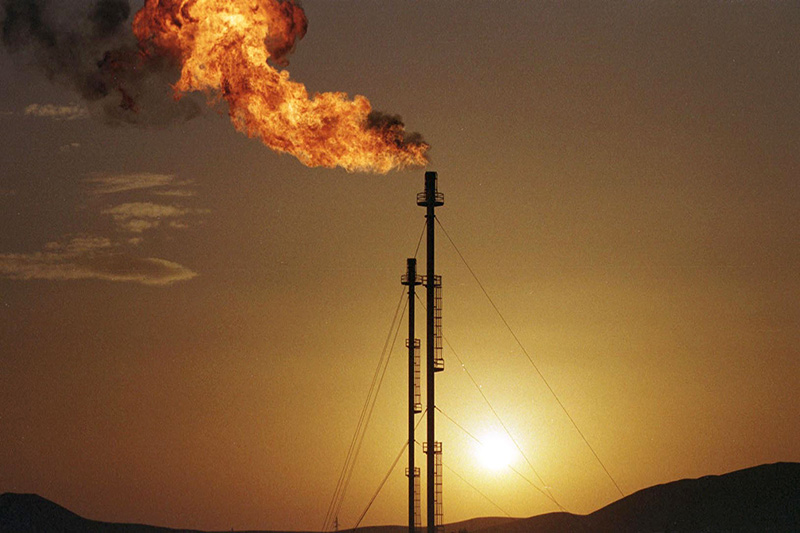Investing.com - Natural gas futures trimmed gains during U.S. morning trade on Thursday, coming off the highest level since December 2011 after a report from the U.S. Energy Information Administration showed U.S. gas supplies rose more-than-expected last week.
On the New York Mercantile Exchange, natural gas futures for delivery in November traded at USD3.231 per million British thermal units during U.S. morning trade, adding 0.5%.
It earlier rose by as much as 2.15% to trade at a session high of USD3.286 per million British thermal units, the strongest level since December 13, 2011.
The November contract traded at USD3.260 prior to the release of the U.S. Energy Information Administration report.
The U.S. Energy Information Administration said in its weekly report that natural gas storage in the U.S. in the week ended September 21 rose by 80 billion cubic feet, just above market expectations for an increase of 76 billion cubic feet.
Inventories rose by 89 billion cubic feet in the same week a year earlier, while the five-year average change for the week is an increase of 73 billion cubic feet, according to U.S. Energy Department data.
Total U.S. natural gas storage stood at 3.576 trillion cubic feet as of last week. Stocks were 296 billion cubic feet higher than last year at this time and 282 billion cubic feet above the five-year average of 3.294 trillion cubic feet for this time of year.
Inventory did not top the 3.4-trillion cubic feet level in 2011 until October 5, with stocks peaking at a record 3.852 trillion cubic feet in November of last year.
The report showed that in the East Region, stocks were 75 billion cubic feet above the five-year average, following a net injection of 46 billion cubic feet.
Stocks in the Producing Region were 159 billion cubic feet above the five-year average of 994 billion cubic feet, after a net injection of 29 billion cubic feet.
Market analysts have warned that without strong demand through the early-Autumn shoulder season, gas inventories will reach the limits of available capacity later this year.
Updated weather forecasts predicted normal or above-normal temperatures for most of the country into early October, dampening early-Autumn demand.
Natural gas demand typically rises in the summer as air-conditioning use boosts utility demand, then sinks in the fall as demand weakens ahead of the peak winter heating season.
Elsewhere on the NYMEX, light sweet crude oil futures for delivery in November jumped 1.25% to trade at USD91.12 a barrel, while heating oil for November delivery added 1% to trade at USD3.133 per gallon.
On the New York Mercantile Exchange, natural gas futures for delivery in November traded at USD3.231 per million British thermal units during U.S. morning trade, adding 0.5%.
It earlier rose by as much as 2.15% to trade at a session high of USD3.286 per million British thermal units, the strongest level since December 13, 2011.
The November contract traded at USD3.260 prior to the release of the U.S. Energy Information Administration report.
The U.S. Energy Information Administration said in its weekly report that natural gas storage in the U.S. in the week ended September 21 rose by 80 billion cubic feet, just above market expectations for an increase of 76 billion cubic feet.
Inventories rose by 89 billion cubic feet in the same week a year earlier, while the five-year average change for the week is an increase of 73 billion cubic feet, according to U.S. Energy Department data.
Total U.S. natural gas storage stood at 3.576 trillion cubic feet as of last week. Stocks were 296 billion cubic feet higher than last year at this time and 282 billion cubic feet above the five-year average of 3.294 trillion cubic feet for this time of year.
Inventory did not top the 3.4-trillion cubic feet level in 2011 until October 5, with stocks peaking at a record 3.852 trillion cubic feet in November of last year.
The report showed that in the East Region, stocks were 75 billion cubic feet above the five-year average, following a net injection of 46 billion cubic feet.
Stocks in the Producing Region were 159 billion cubic feet above the five-year average of 994 billion cubic feet, after a net injection of 29 billion cubic feet.
Market analysts have warned that without strong demand through the early-Autumn shoulder season, gas inventories will reach the limits of available capacity later this year.
Updated weather forecasts predicted normal or above-normal temperatures for most of the country into early October, dampening early-Autumn demand.
Natural gas demand typically rises in the summer as air-conditioning use boosts utility demand, then sinks in the fall as demand weakens ahead of the peak winter heating season.
Elsewhere on the NYMEX, light sweet crude oil futures for delivery in November jumped 1.25% to trade at USD91.12 a barrel, while heating oil for November delivery added 1% to trade at USD3.133 per gallon.
